When digital is overdone, take a walk
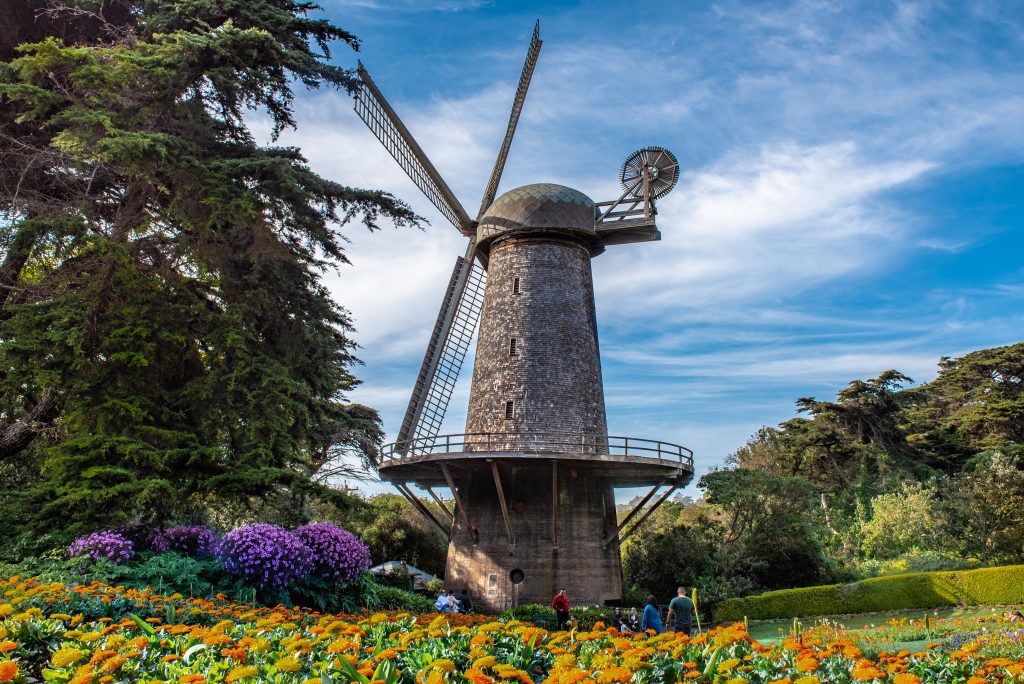
From the Pacific to the Presidio to the Embarcadero, our city is an outdoor museum with a splendid array of street art, statues, sculptures and landmarks. Accessible to everyone all the time, enjoy some of the highlights of a permanent outdoor gallery where the “doors” are always wide open in the fresh air. No walls, no admission fees, no crowds.
Dutch Windmills
Overlooking the ocean, handsome silhouettes set against a deep blue sky, two 115-year-old windmills grace the western edge of Golden Gate Park. The Dutch Windmill and the Murphy Windmill are exceptionally tall at 75 feet and 95 feet.

The smaller North windmill, known as the Dutch Windmill, was built to fill several man made ponds when Golden Gate Park was created. The South windmill, known as the Murphy Windmill, was once the largest outside the Netherlands, with massive sails each cut from a single log. In spring, Queen Wilhelmina Tulip Garden at the base of the Dutch Windmill displays thousands of bright tulips in full bloom.
Did you know? Notice these sails turn clockwise, in the opposite direction to windmills in Holland.
Where: 1690 John F. Kennedy Drive at the western edge of Golden Gate Park
Salut, France
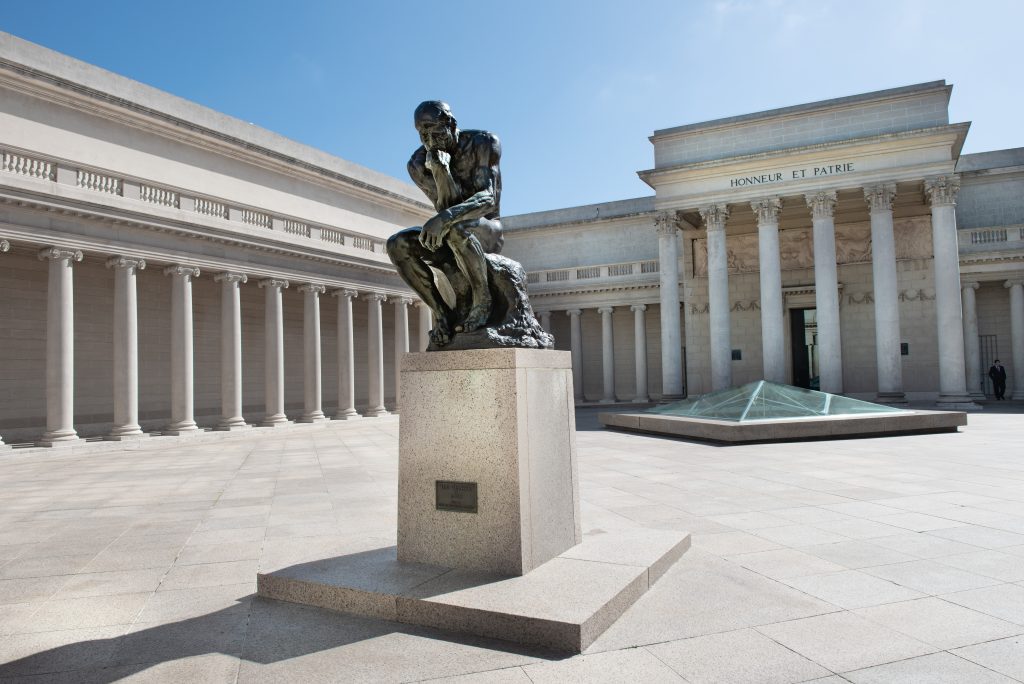
“The Thinker” by Auguste Rodin is a larger-than-life bronze cast presiding over the formal courtyard entrance of the Legion of Honor. Atop a bluff overlooking the water of the Golden Gate, Ionic columns line the perimeter of the fine art museum that displays the motto, “Honneur et Patrie.” This 1924 San Francisco landmark is a three-quarter replica of the Palais de la Légion d’Honneur in Paris, a classic 18th century edifice facing the River Seine on the Left Bank.
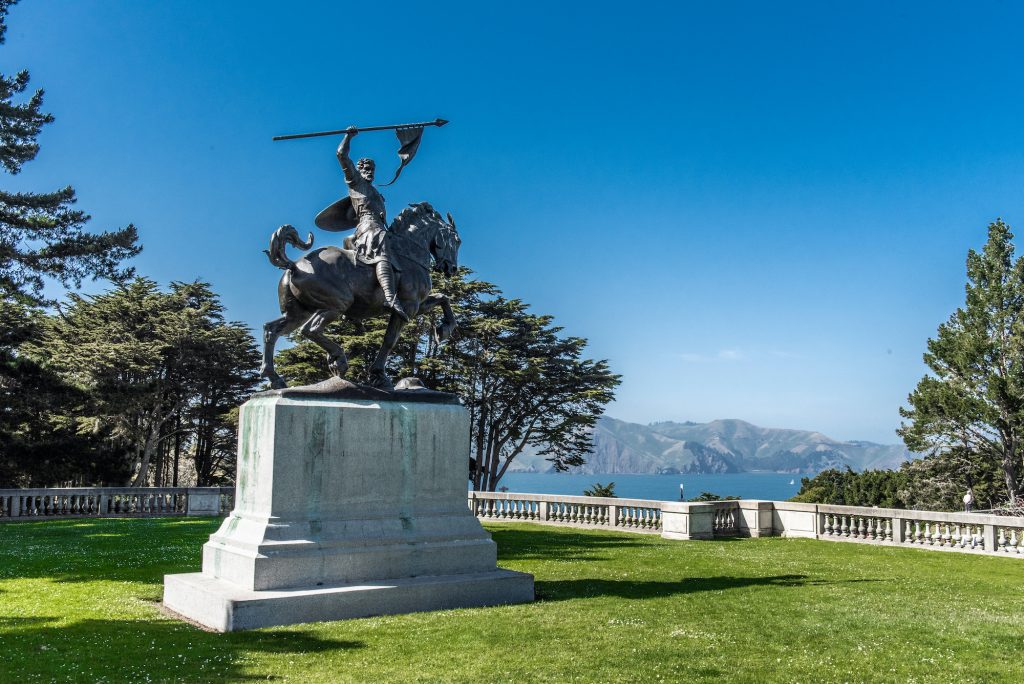
Take a wander around the grounds. A modern eye-catching 11-ton artwork in red entitled “Pax Jerusalem” by native son Mark di Suvero dominates the forecourt. Nearby in a corner overlooking bridge views, the Holocaust Memorial consists of 11 bronze figures to symbolize Jews in concentration camps, each one sheathed in white to resemble plaster, an artistic signature by artist George Segal.
Did you know? “The Thinker” was the gift of Alma de Bretteville Spreckels, one of 70 Rodin sculptures she purchased and donated.
Where: 100 34th Avenue in Lincoln Park
Goldsworthy Goals
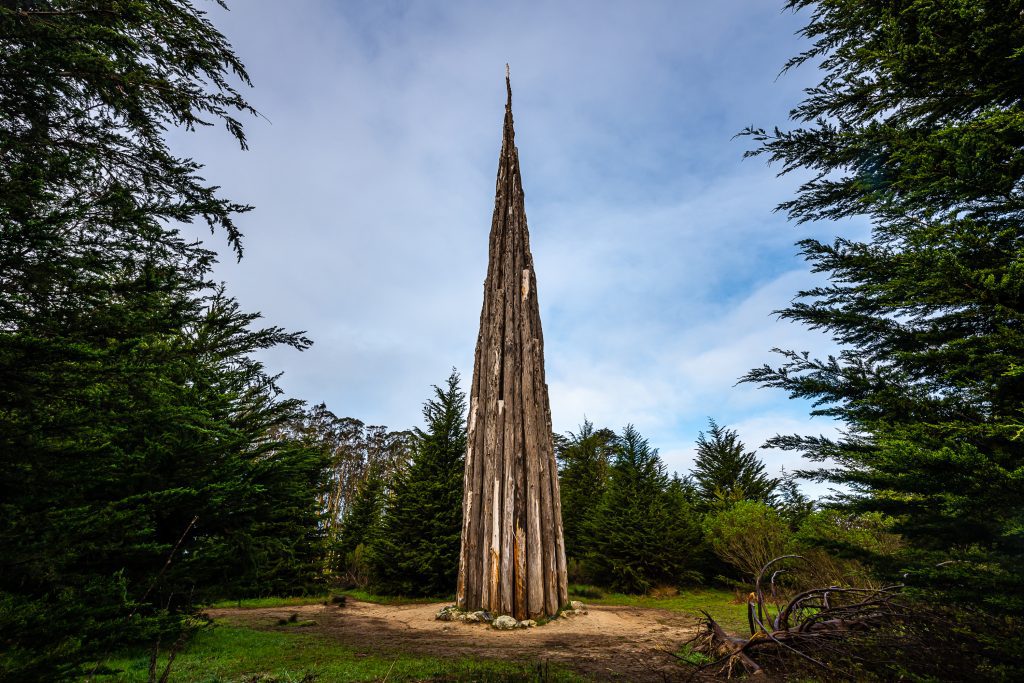
With the Presidio as his canvas, Andy Goldsworthy uses nature to create work of transcendent beauty. Drawing inspiration from materials found close at hand, such as tree trunks, branches, leaves and stones, he strives “to make connections between what we call nature and what we call man-made.”
Just north of Arguello Gate near the golf course, look up to find “Spire” built from 37 felled Monterey cypress trees soaring 100 feet into the sky. Young cypress trees are built around the sculpture’s 15-foot base, ensuring that in time, these younger trees will obscure the artwork, as its meaning intends.
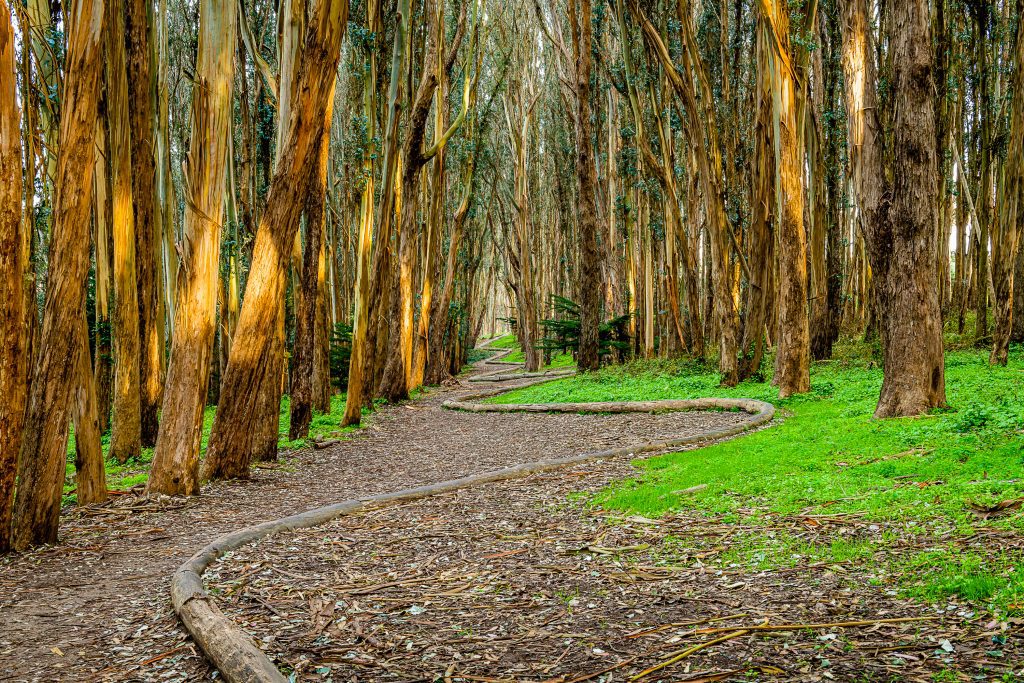
A statement about the forest’s evolution is also expressed in Goldsworthy’s “Wood Line” located in a eucalyptus grove adjacent to the Lovers’ Lane footpath just north of Presidio Gate. Sourced from old branches, it’s a graceful, sinuous sculpture extending 1,200 feet on the forest floor, weaving its way toward the Tennessee Hollow Watershed.
Did you know? Within the 1,500 acres of The Presidio, there are two more Andy Goldsworthy artworks, Tree Fall and Art Wall.
Where: The Presidio of San Francisco
Romantic Aesthetics

Conceived to evoke a decaying ruin of ancient Rome, the Palace of Fine Arts housed art from Renaissance to Modern as a highlight of the 1915 Panama Pacific International Exposition. California architect Bernard Maybeck designed the pavilion to be ephemeral, as with the other structures within the 635-acre fair.
In 1964, the badly deteriorating rotunda and colonnades were demolished and rebuilt for permanence, using poured-in-place concrete. Steel beams were hoisted into place for the dome of the rotunda for which all the embellishments, decorations and sculpture were constructed anew. Much loved today, as more than a century ago, the charm factor is doubled due to visual effects provided by the adjacent lagoon.

Did you know? There were originally 11 open air exhibit palaces constructed for the 1915 exposition. But only this one—considered then to be the most beautiful by some 18 million visitors—survives.
Where: 3601 Lyon Street in the Marina District
Kissing Cousins

Stunning in white, the 140-year-old Victorian era Conservatory of Flowers in Golden Gate Park is the oldest glass and wood structure of its kind in North America. The magnificent 1879 landmark that’s listed on the National Register of Historic Places is modeled after its handsome cousin, the lace-like wrought-iron Palm House at the Royal Botanical Gardens in Kew, London.
The space is filled with 2,000 exotic plant species and rare beautiful blooms. When the doors are locked, appreciate the exterior before heading across the park to San Francisco Botanical Gardens.
Did you know? In June 1962, the Swiss clock industry donated an electrical floral clock that still keeps time on the East Lawn next to the Conservatory.
Where: 100 John F. Kennedy Drive in Golden Gate Park
Everybody’s Garden

Sometimes, Mother Nature and the skilled hands of gardeners join forces to create living art. Essential now, more than ever, an urban garden is a place of peace, calm, and reflection that promotes well-being. A park within a park, San Francisco Botanical Garden is 55 acres filled with 9,000 plants from all corners of the world nicely tucked into its own corner of Golden Gate Park. Open daily with free admission to San Francisco City and County residents with proof of residency.
Did you know? Coast Redwoods in this arboretum are the oldest trees here, planted around the turn of the 20th century.
Where: In Golden Gate Park near 9th Avenue at Lincoln Way
Cupid’s Span

Beside the Embarcadero in the shadow of the Bay Bridge, a grassy mound is pierced by a whimsical 60-foot arrow made of fiberglass and steel cutting through a balanced bow. The piece was trucked in and installed overnight in 2002, when the Gap owner and chairman who commissioned the work from celebrated pop artist Claes Oldenburg and his wife, Coosje van Bruggen, said,””I think it will become an icon of the city. It will be tremendously photographed.”
The artists are known for a sense of humor, hugely blowing up everyday objects as a toothbrush, umbrella, bicycle, lipstick and binoculars. What does this sculpture mean? Oldenburg and van Bruggen said Cupid’s bow is a stereotype of love, as well as a shape that evokes sailing ships and the bridge. The artists said the point of the arrow and the front part of the bow are buried in the ground so as to “defunctionalize” them.

Did you know? There’s a second Oldenburg artwork, “Corridor Pin, Blue” standing 21 feet tall in the outdoor Sculpture Garden at de Young Museum.
Where: The Embarcadero at Folsom Street



